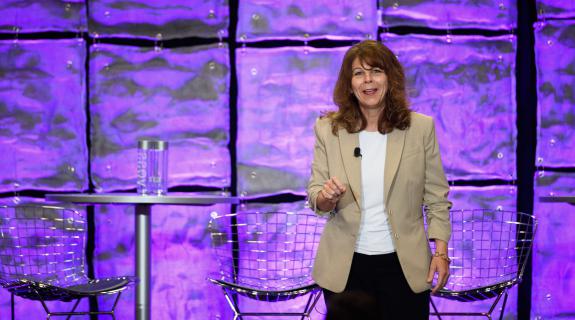“This data is a bit depressing.” says Dr. Stacy L. Smith as she prepares to deliver her keynote to attendees at PromaxBDA: The Conference 2017 in Los Angeles. The crowd anxiously laughs as they await to see Smith’s latest research numbers on character diversity and inclusion in Hollywood. Each year, Smith’s Media, Diversity and Social Change initiative at USC looks at the Top 100 films and its revenue to answer one question; Just how inclusive are Hollywood films?
Her findings show that roughly 20 percent of the United States population has a disability, for example, and yet just 2.4 percent of characters with disabilities are shown onscreen. Further, a full 48 films in 2015 feature not one African American, and another 40 have no Latino actors. These numbers show disparity in other underserved storytelling areas, too, including gender, age and weight.
But Smith’s research isn’t just someone’s portrayal in a film. It’s also about how art imitates life.
“Stories matter,” she says.
In an earlier Q&A session, a woman in the crowd shared a personal story: “My daughter is eight years old, and doesn’t like TV because she doesn’t see girls on TV that look like her.”
So even while Wonder Woman shatters records and promotes new narratives, female executives are few and far between. Girls have to, first, see themselves represented.
Solutions? Smith advises us to change our perception of leadership. She once did a study asking people to name traits of successful women film directors. They were twice as likely to name masculine characteristics. Some include “General Patton. Tough as Nails. Muscular Director. Aggressive. Ambitious. Rally the troops.” The language of leadership is masculine, and until that perception changes, we will have a pipeline and hiring problem.
“We must change the language of leadership,” says Smith.
But it’s not just about including women. Sure, you may have written in a girl or woman in your script, but how are you portraying her? Dr. Smith tells the crowd: “Sexy continues to be the status quo for females in film. Females are three times more likely to be shown in sexy attire.” She continues “This is a perception issue. That is perpetuating what women can and can’t do.”
And this isn’t just women, it’s girls, too. According to Smith, women who are 13 to 20 years old are as likely as those who are 21 to 39 years old to be sexualized. The facts are evident: Inclusion in stories isn’t just about ticking a box or plopping a character into a storyline.
To make it all easy, Smith left us with a few takeaways: “Just add five,” she says. If you include five female characters in your creative, you set a new norm. Have you heard of the Modified Rooney Rule? When hiring outside the organization, NFL teams must consider an individual from an under-represented racial/ethnic group. How about the Equity Rider? A clause in an actor’s contract that stipulates that equality must be part of the process for casting and filling behind the scenes roles.
Finally, Dr. Smith concludes, communication and environment are paramount. Organizations must communicate that women and individuals from under-represented racial groups are welcome and fit in.
“Sometimes you have to look outside of your own network to solve your issues,” says Smith.
[Image courtesy of ImageGroupLA/Matt Petit]
Tags:













































__twocolumncontent.jpg)











